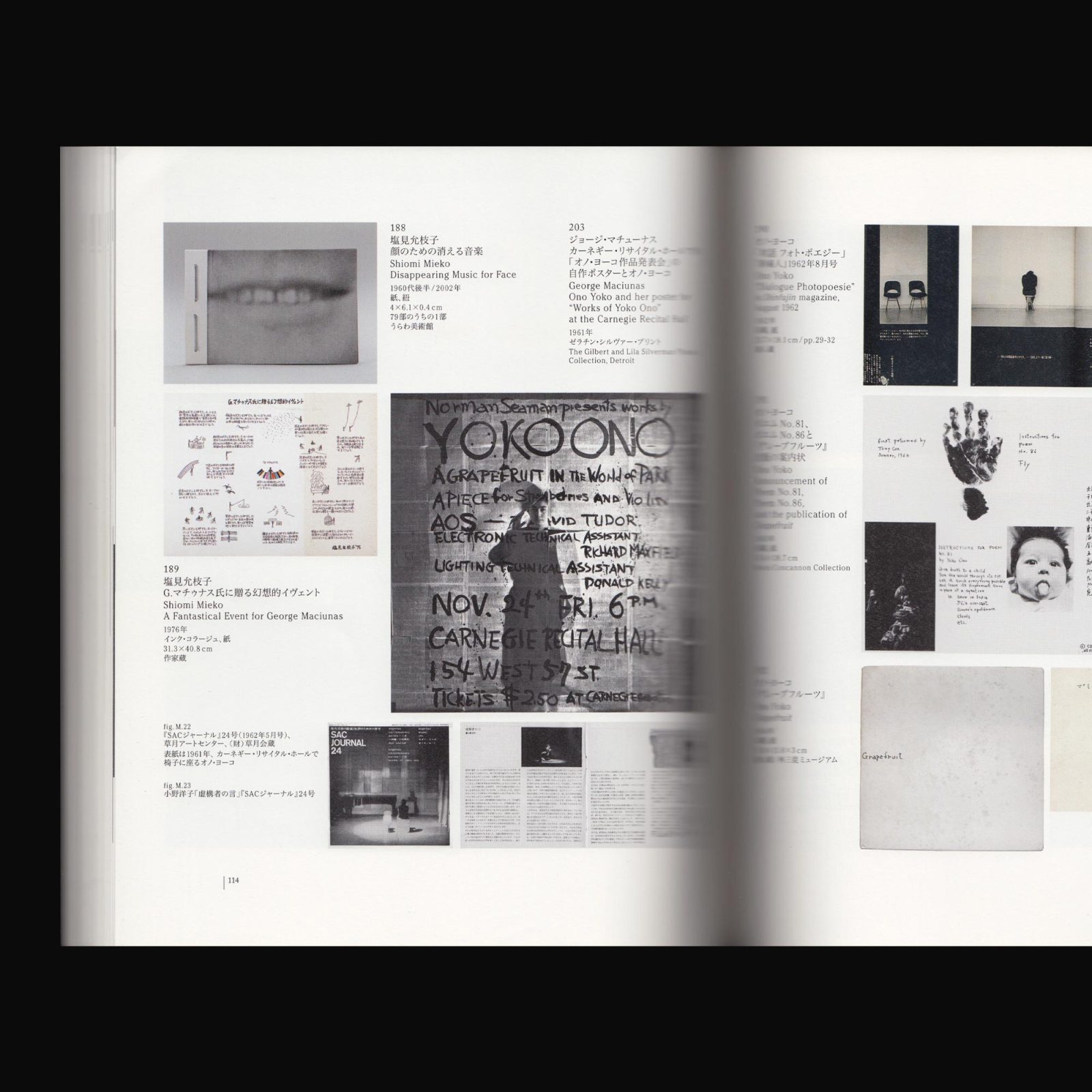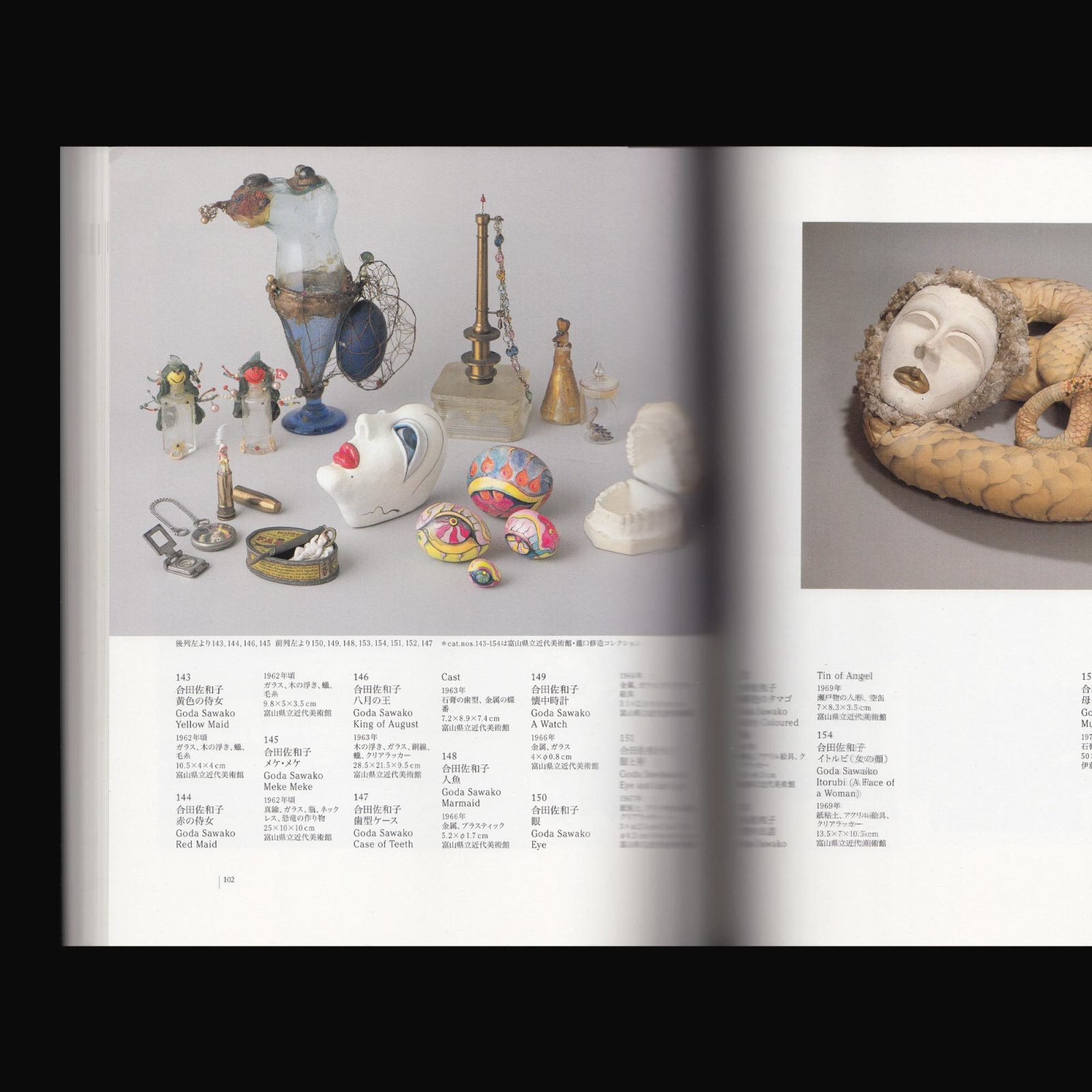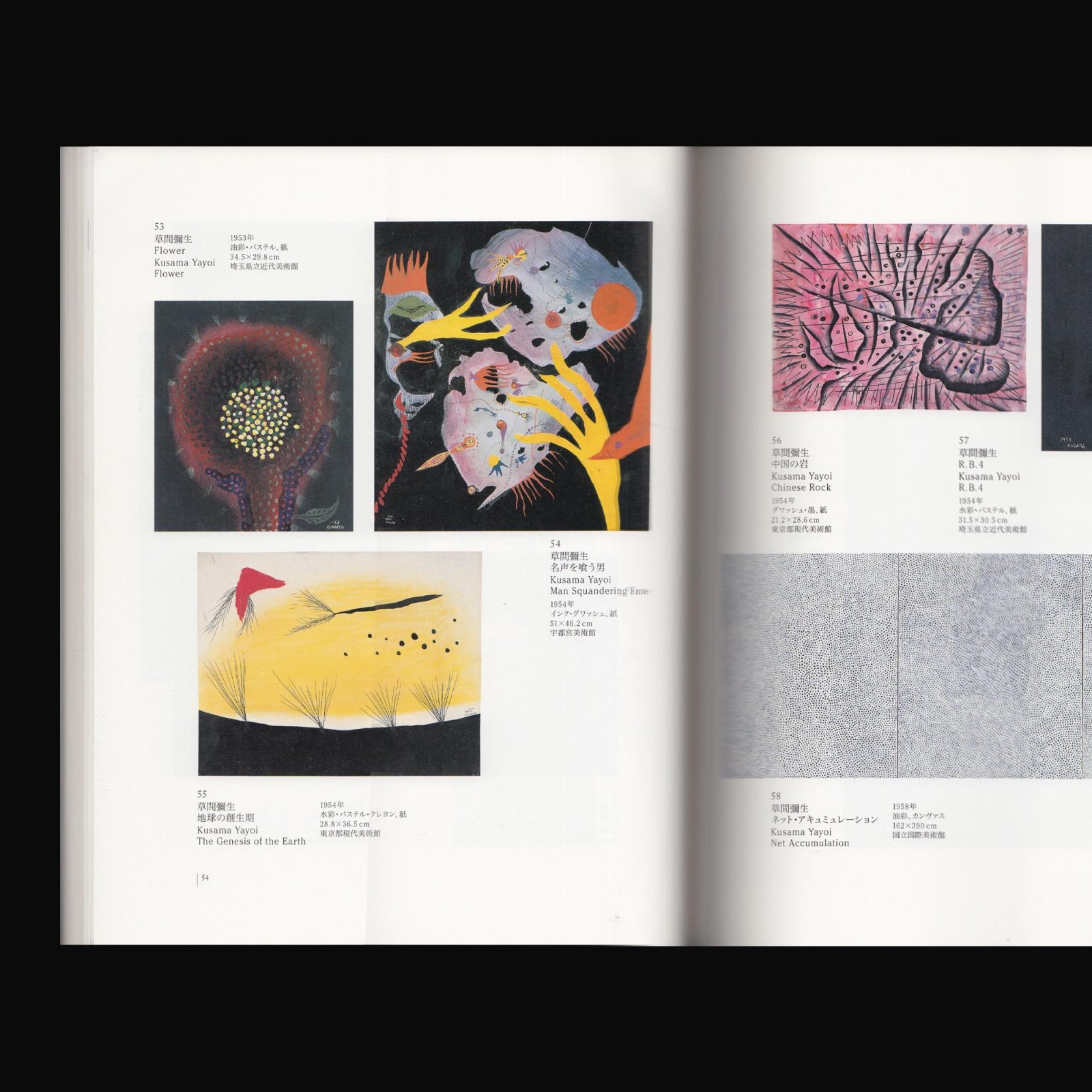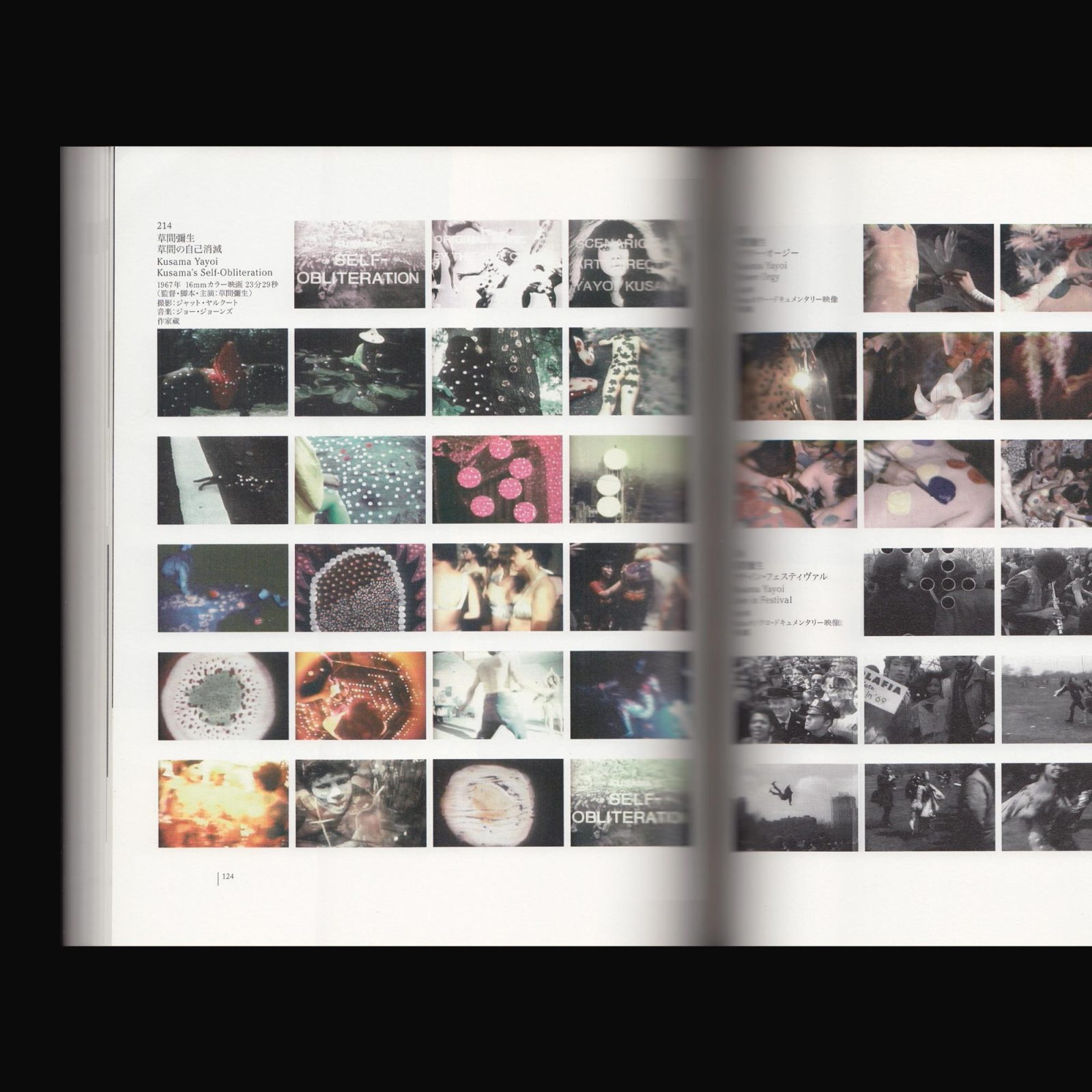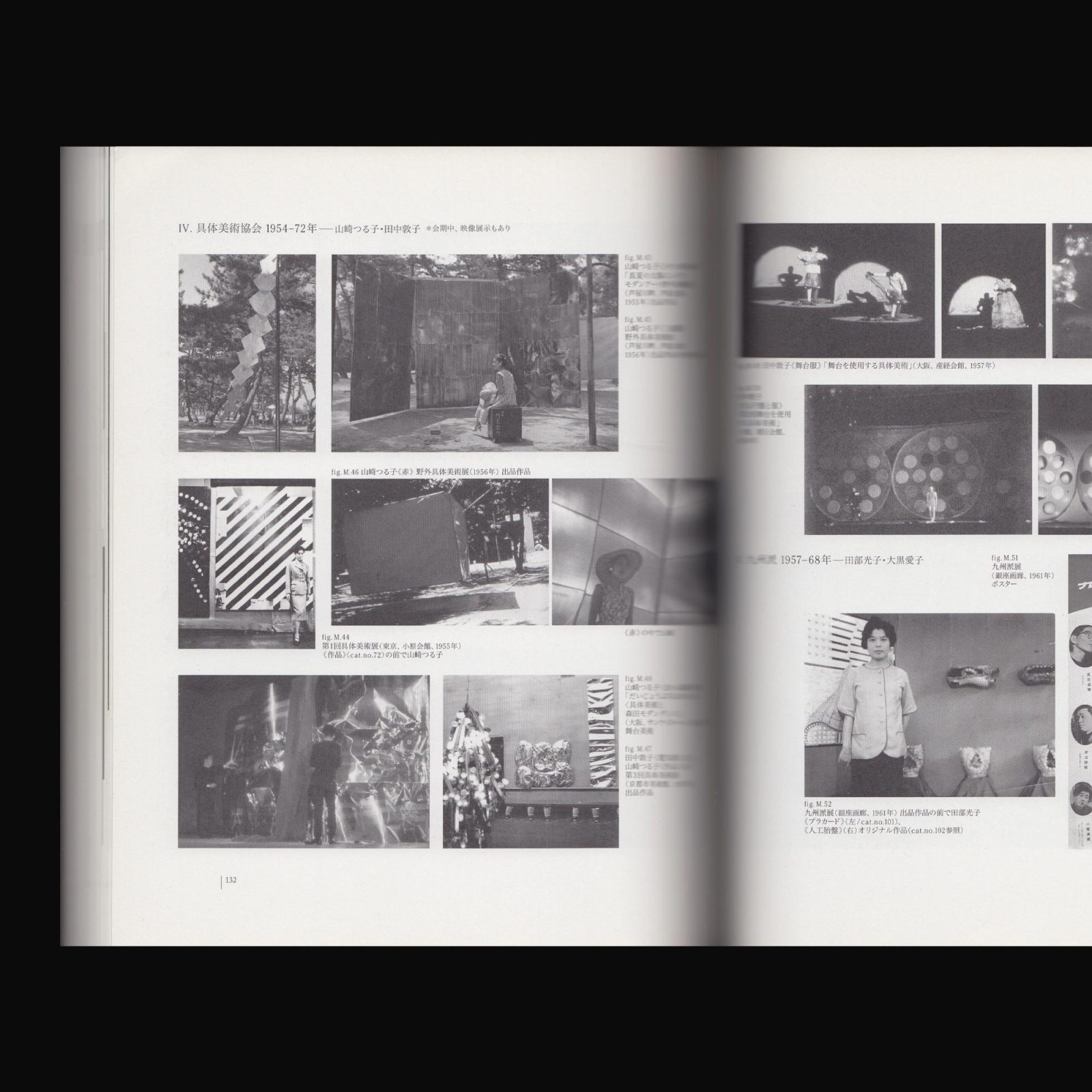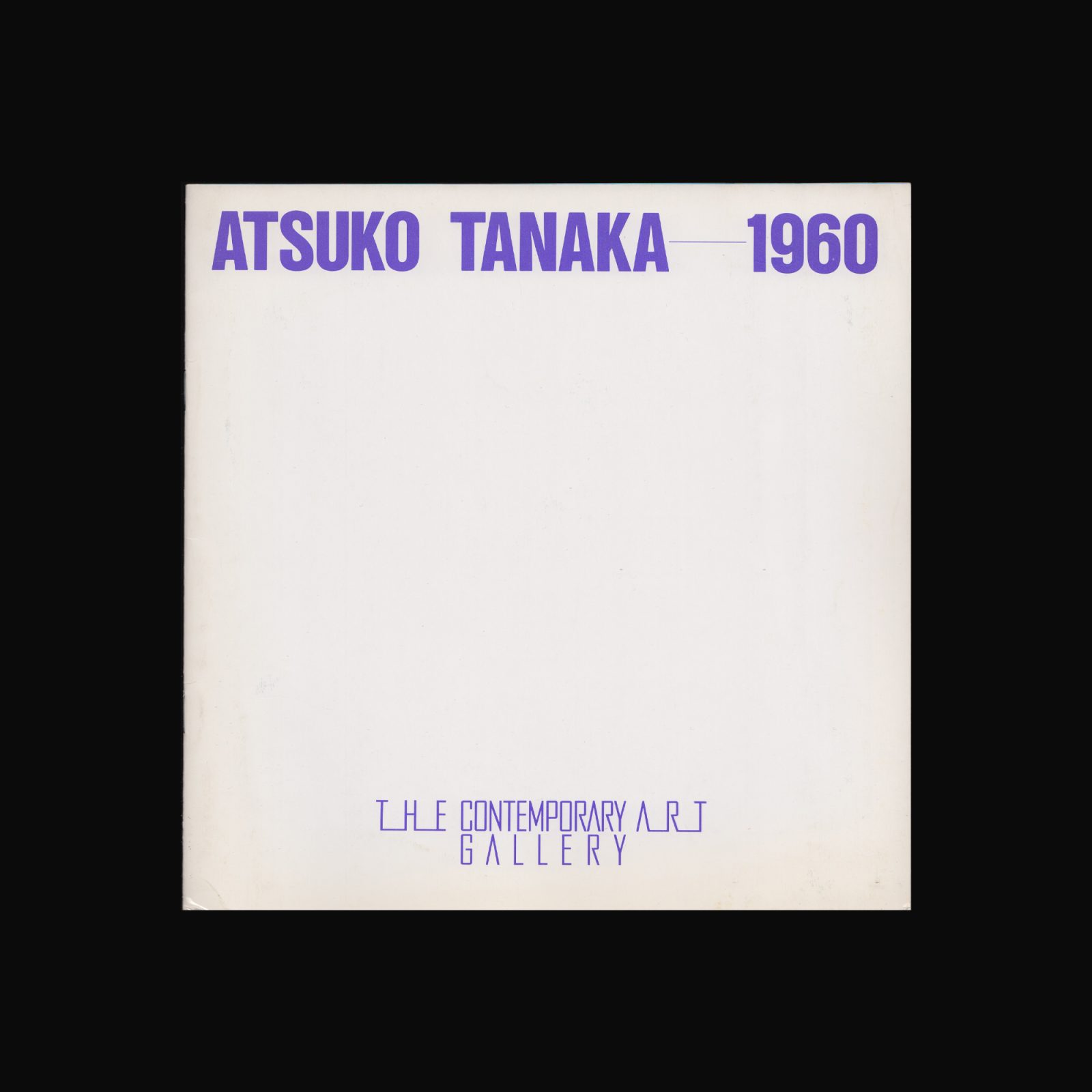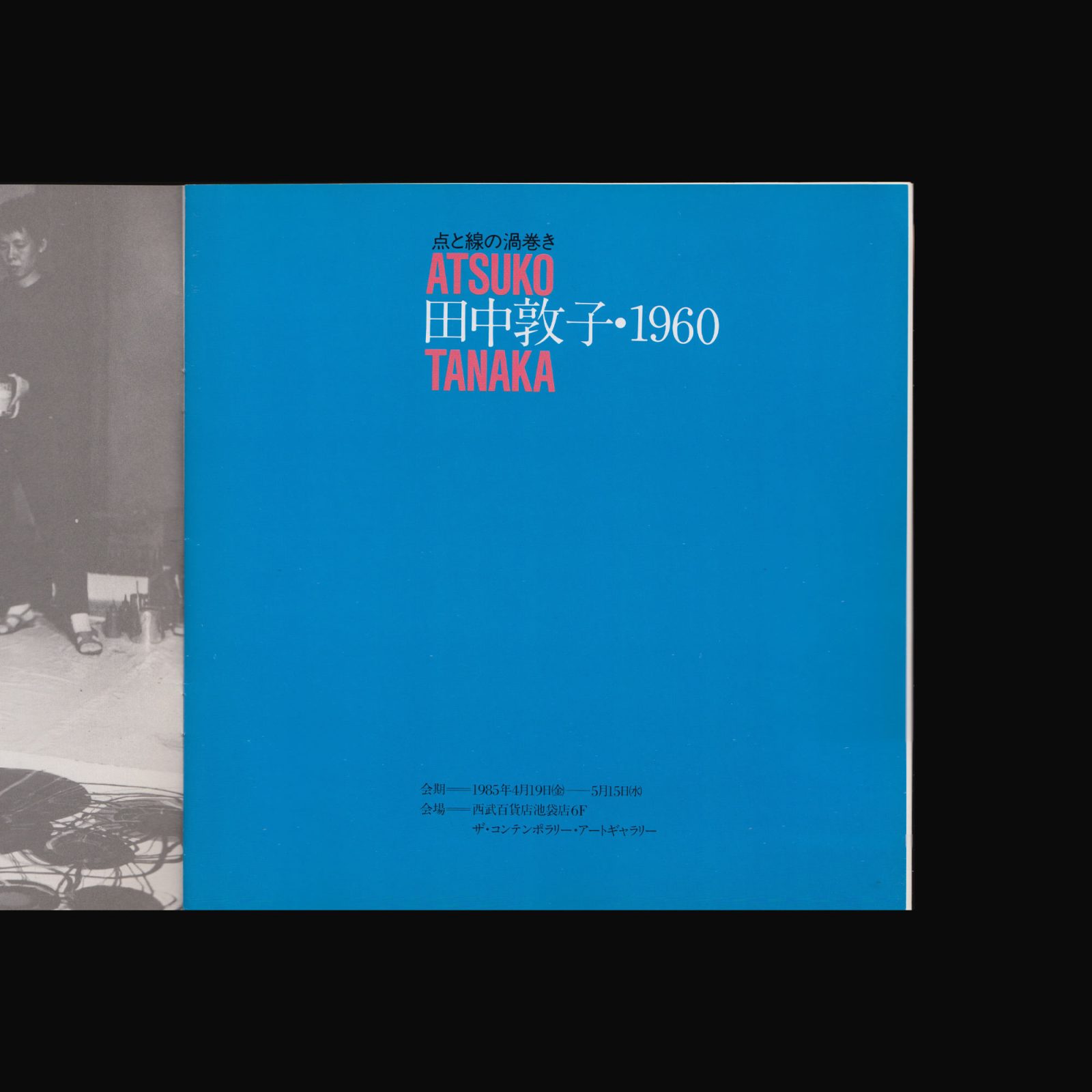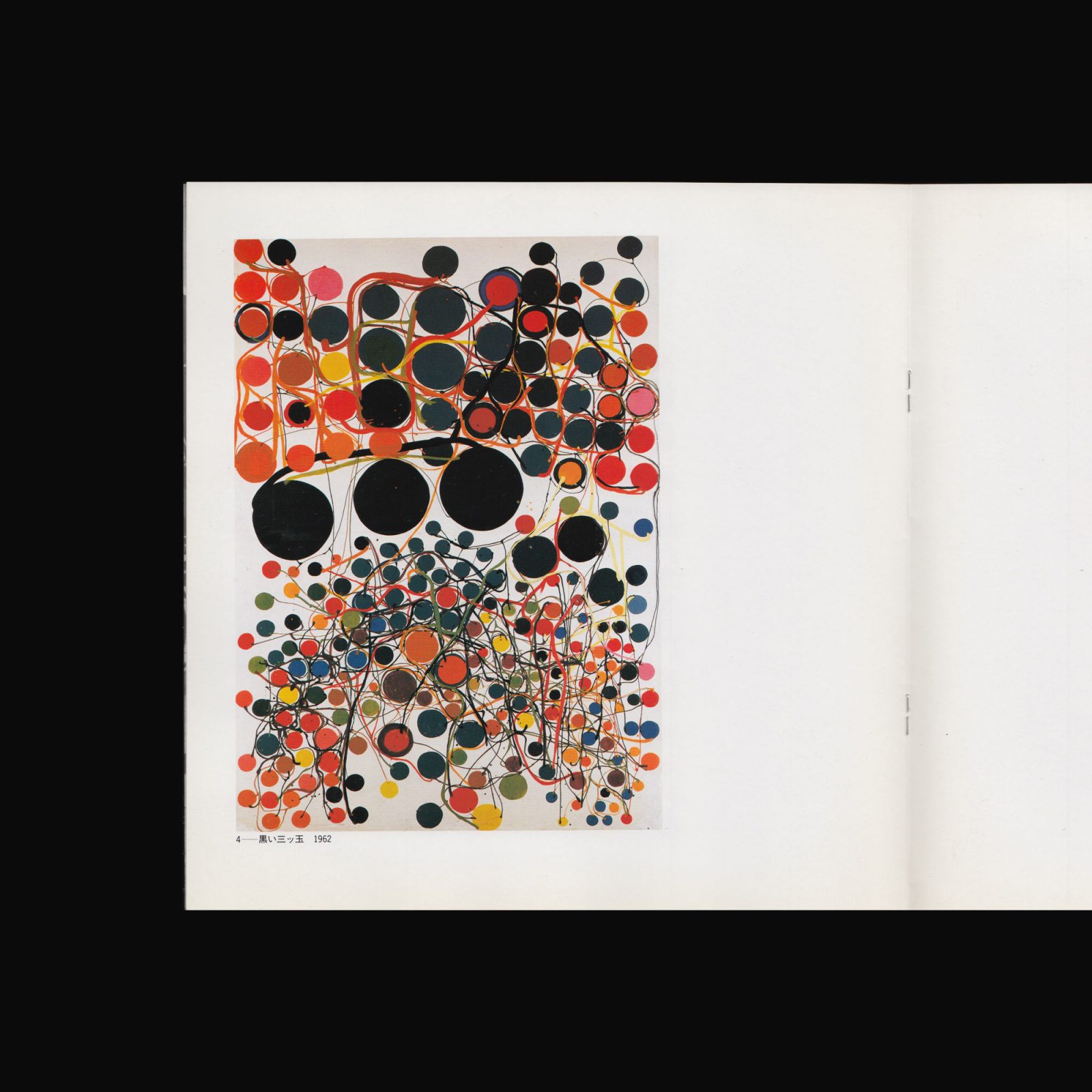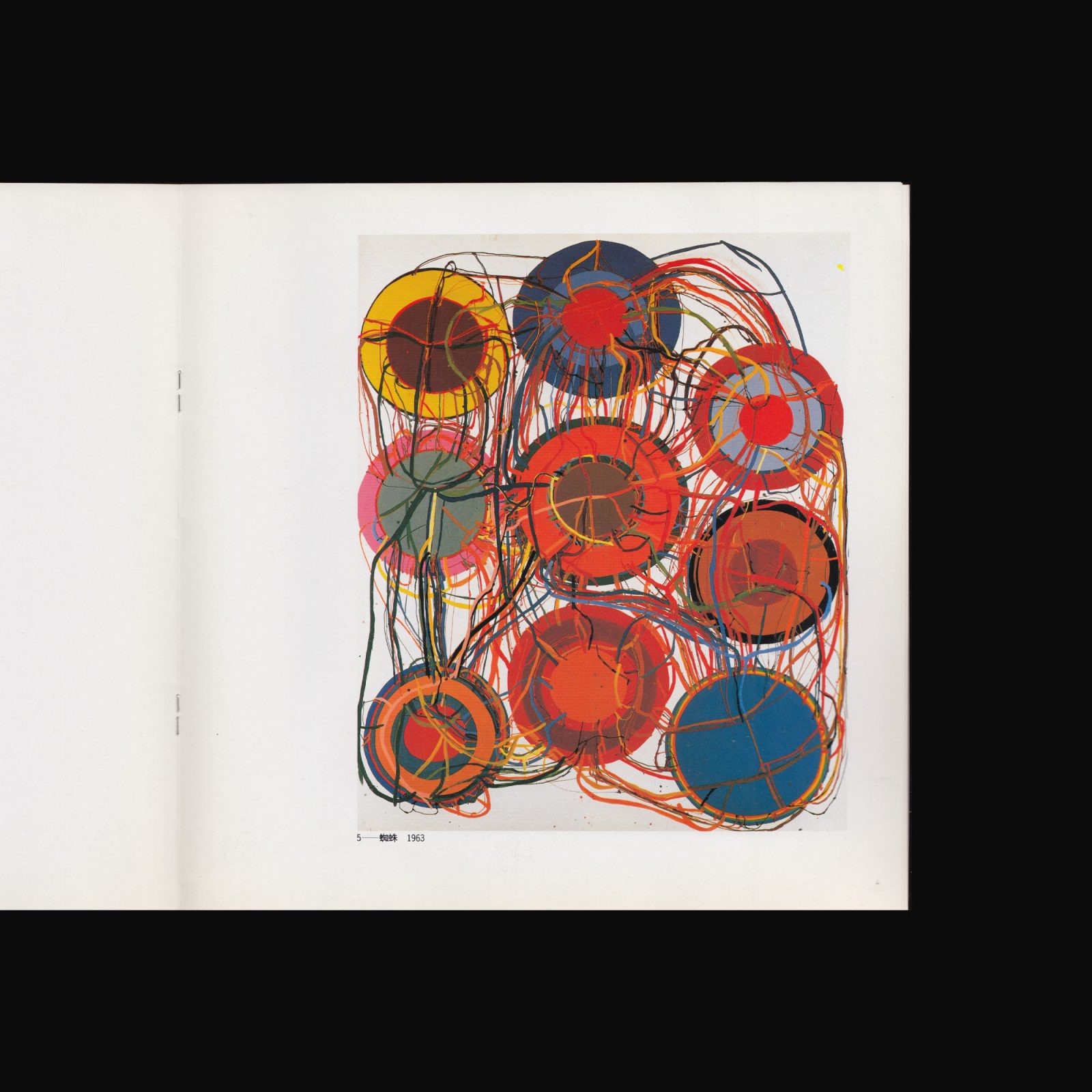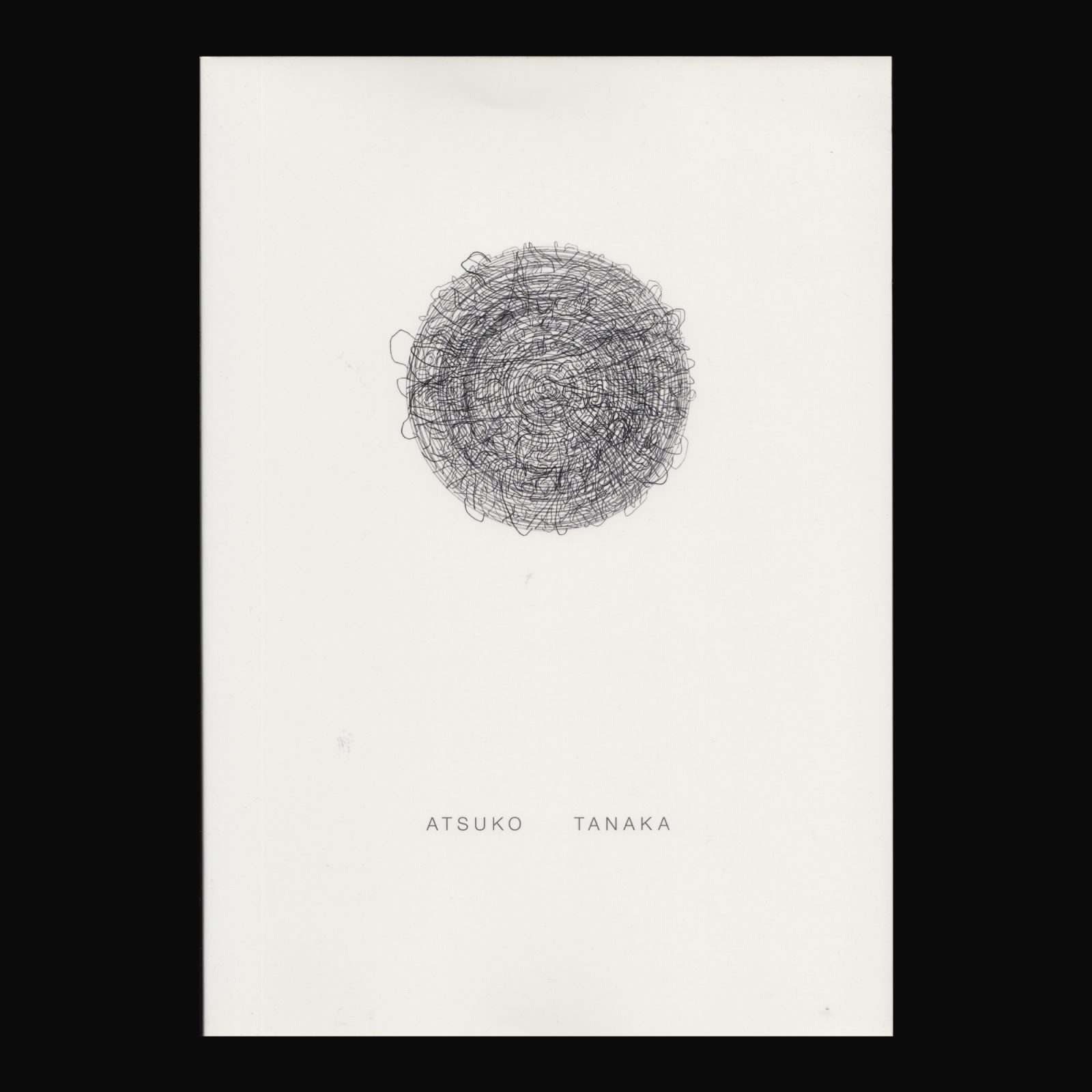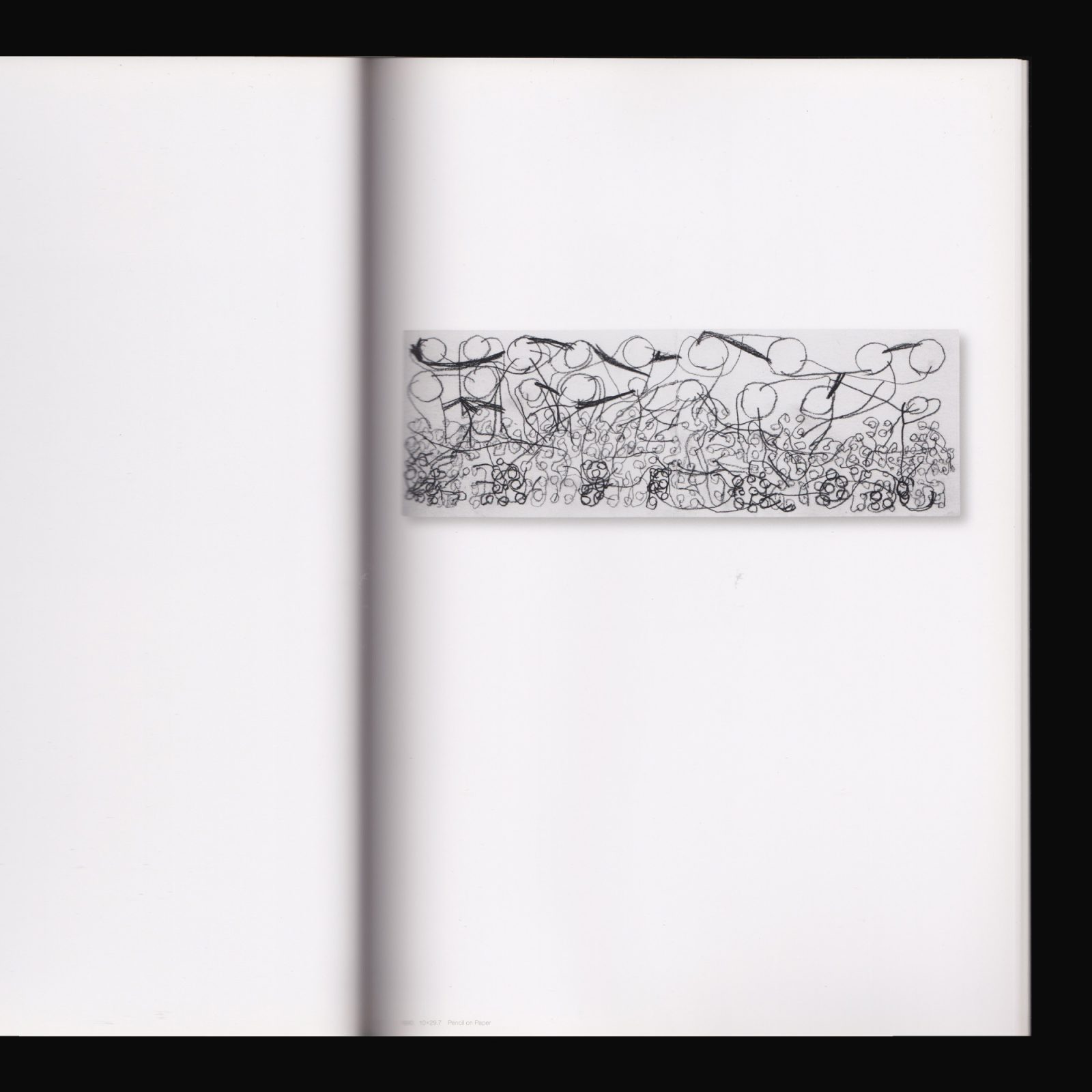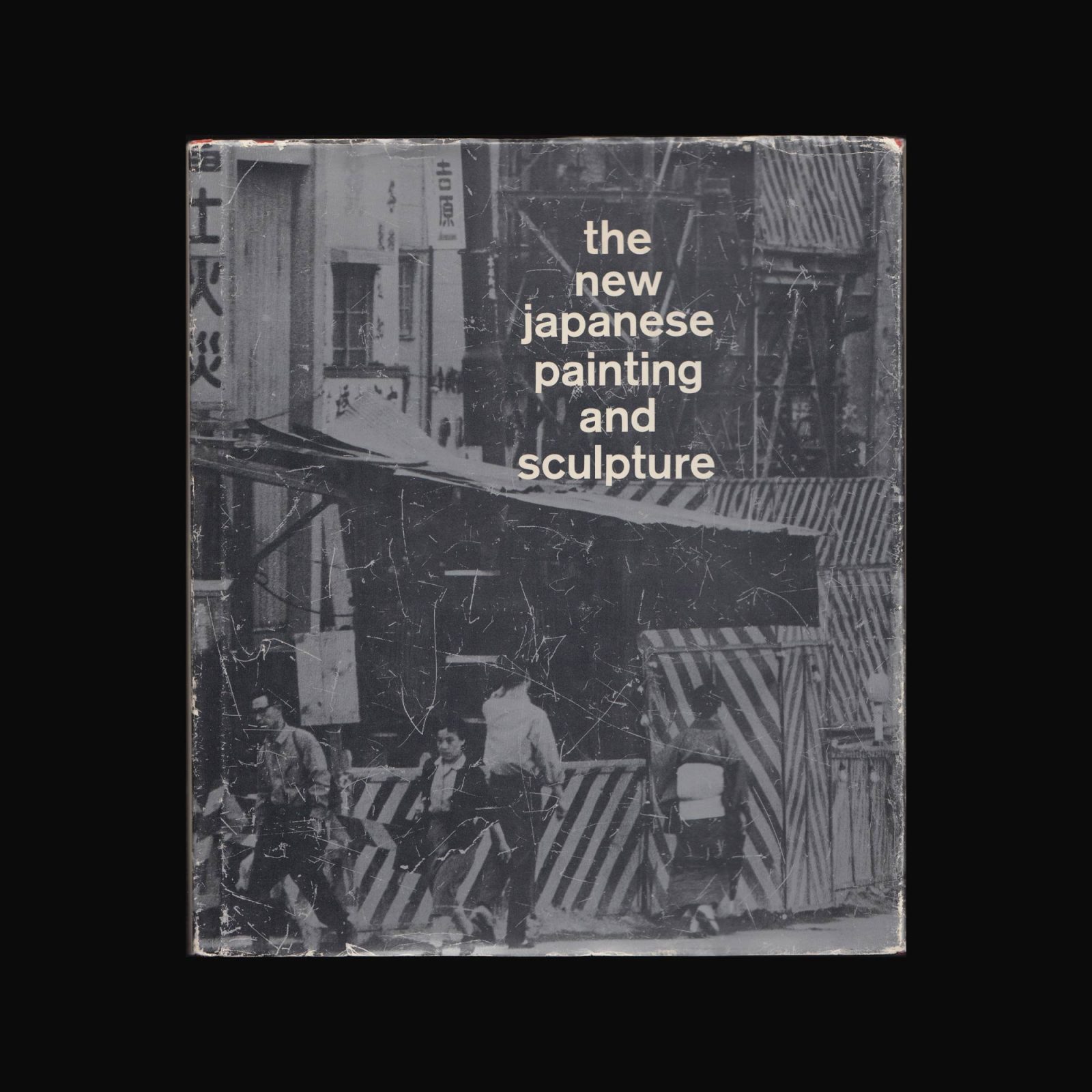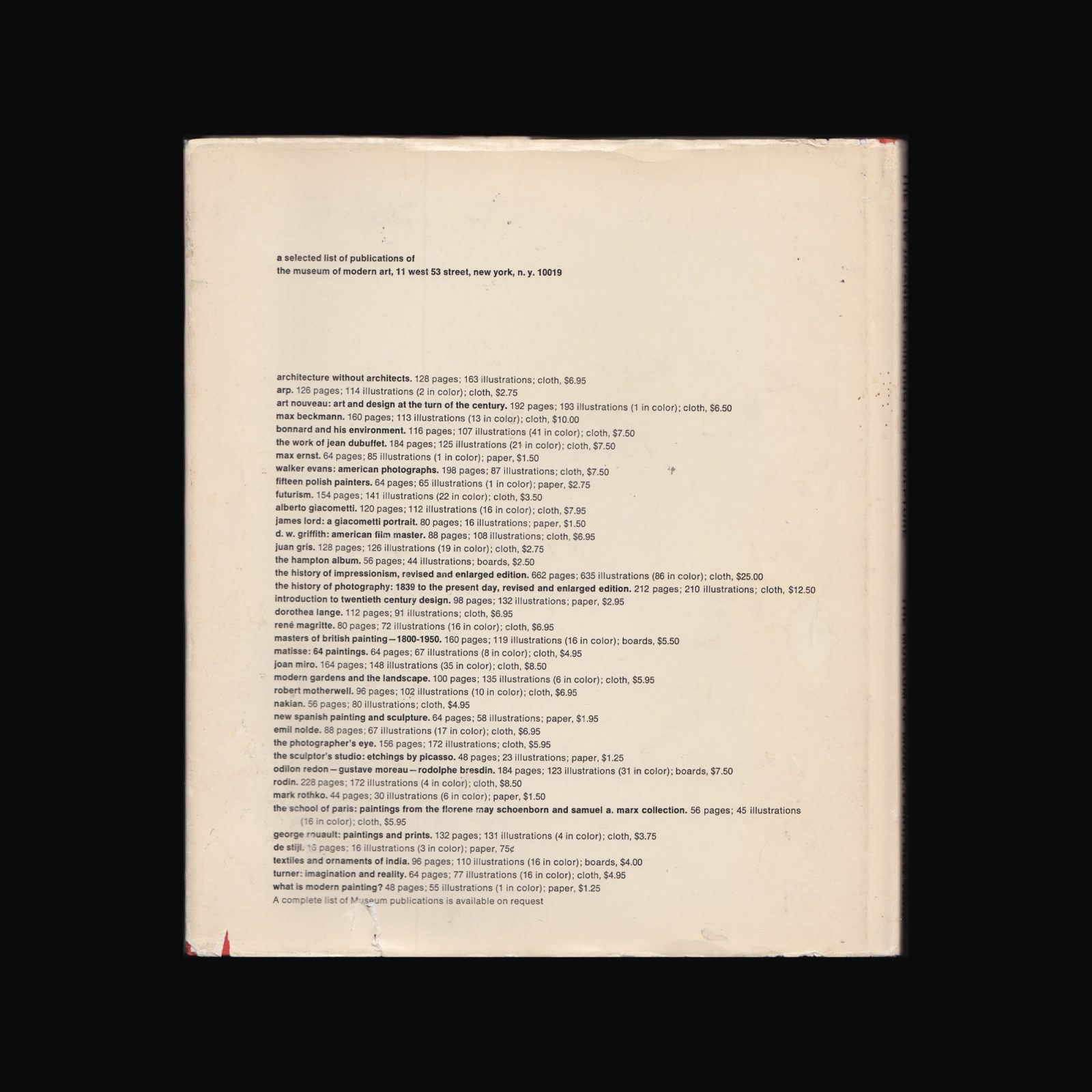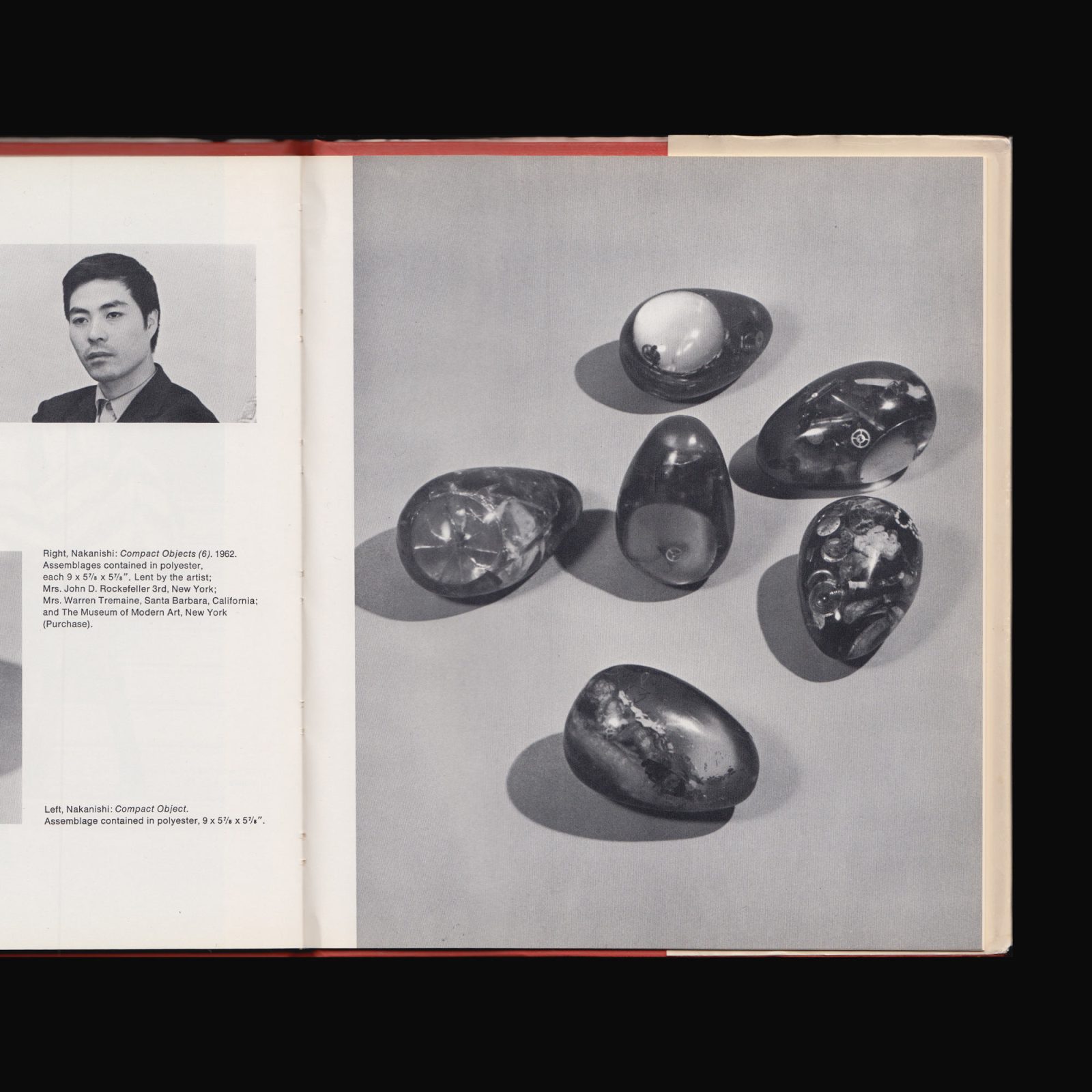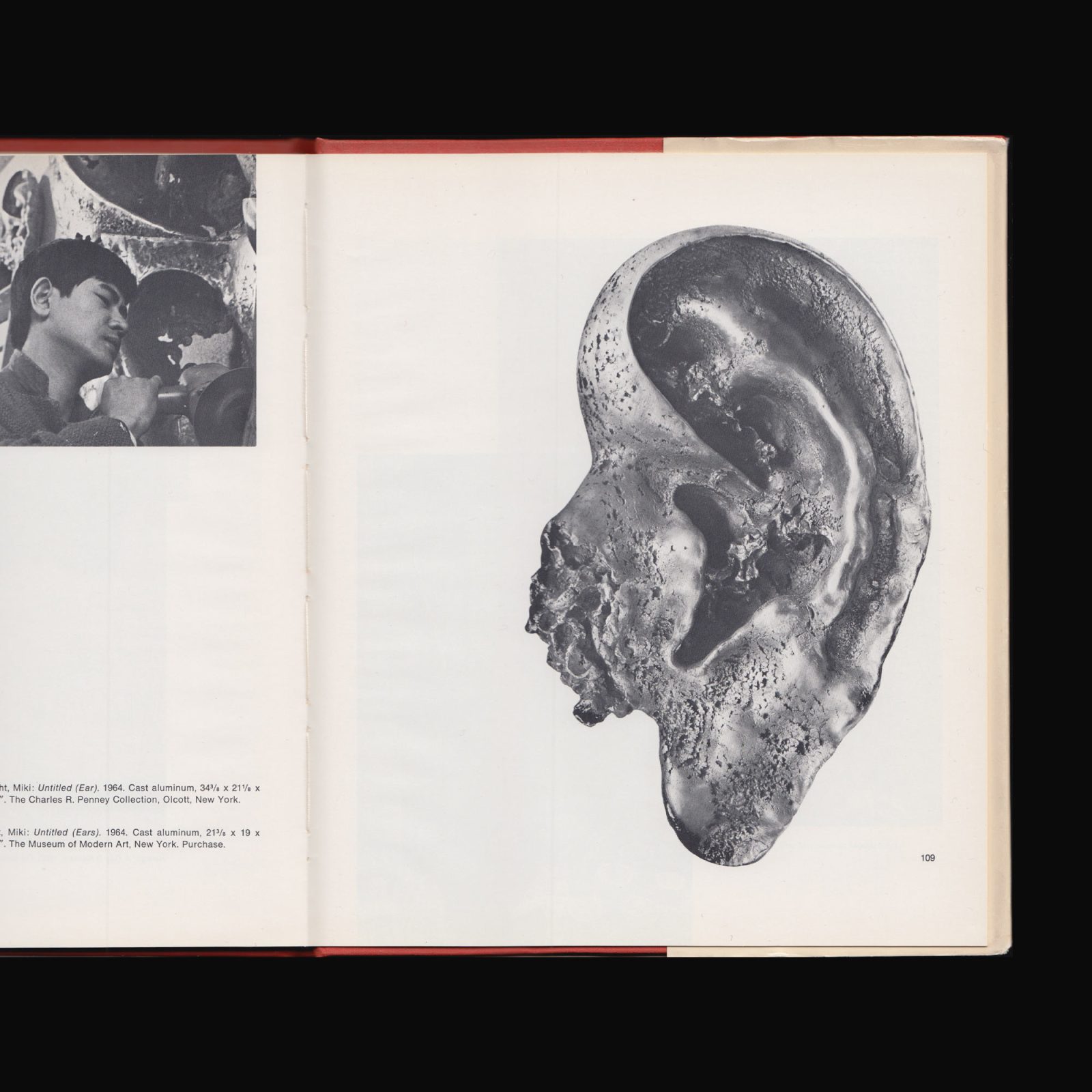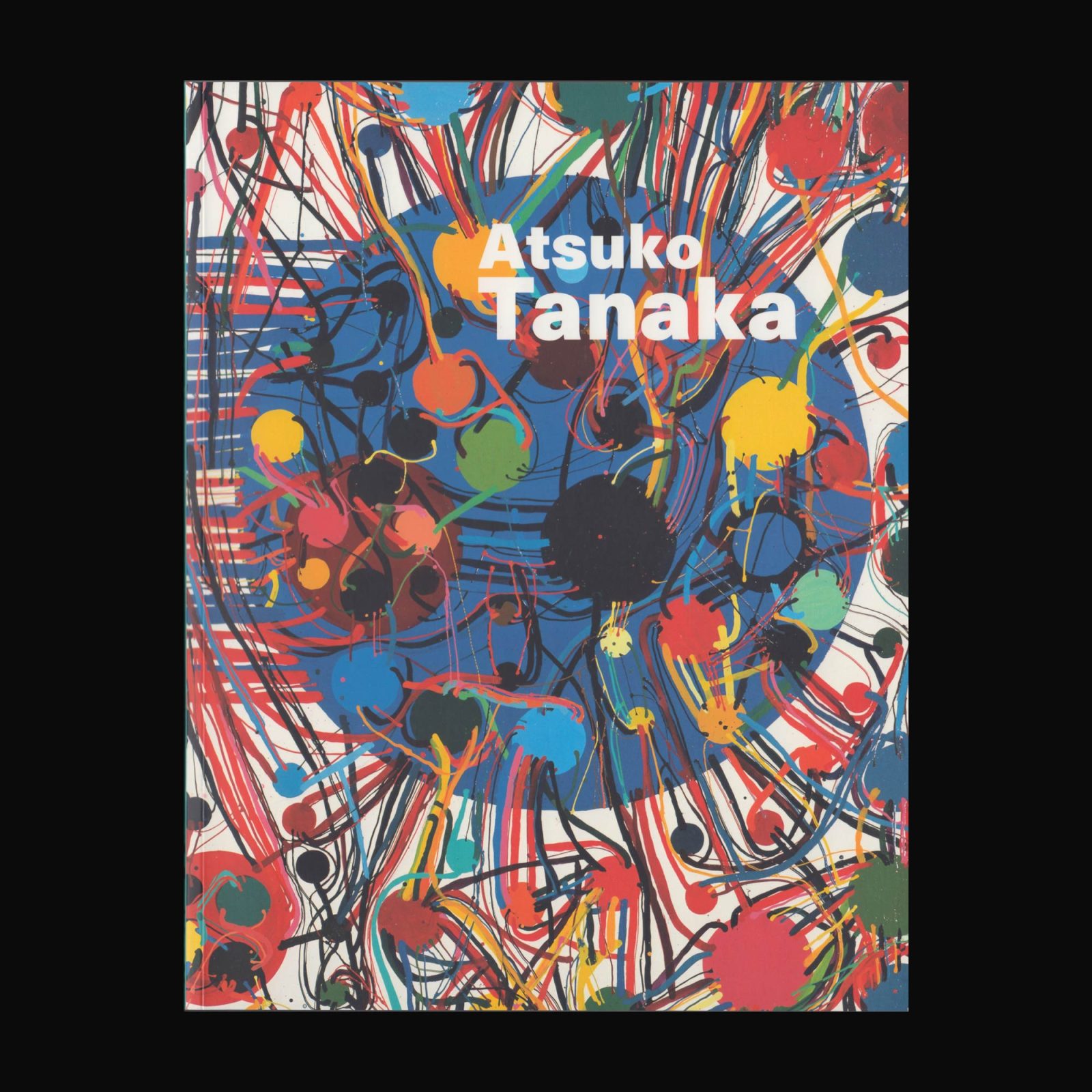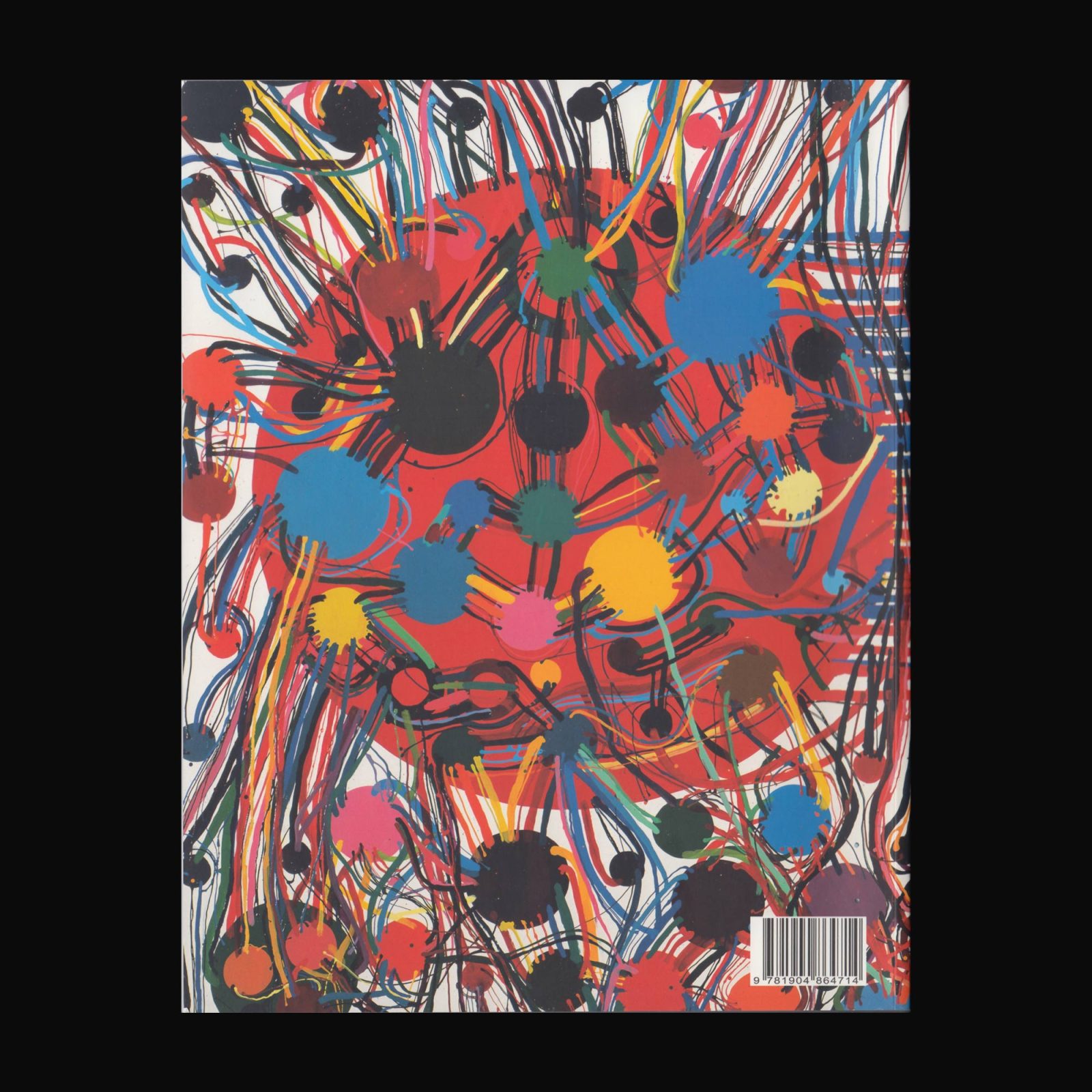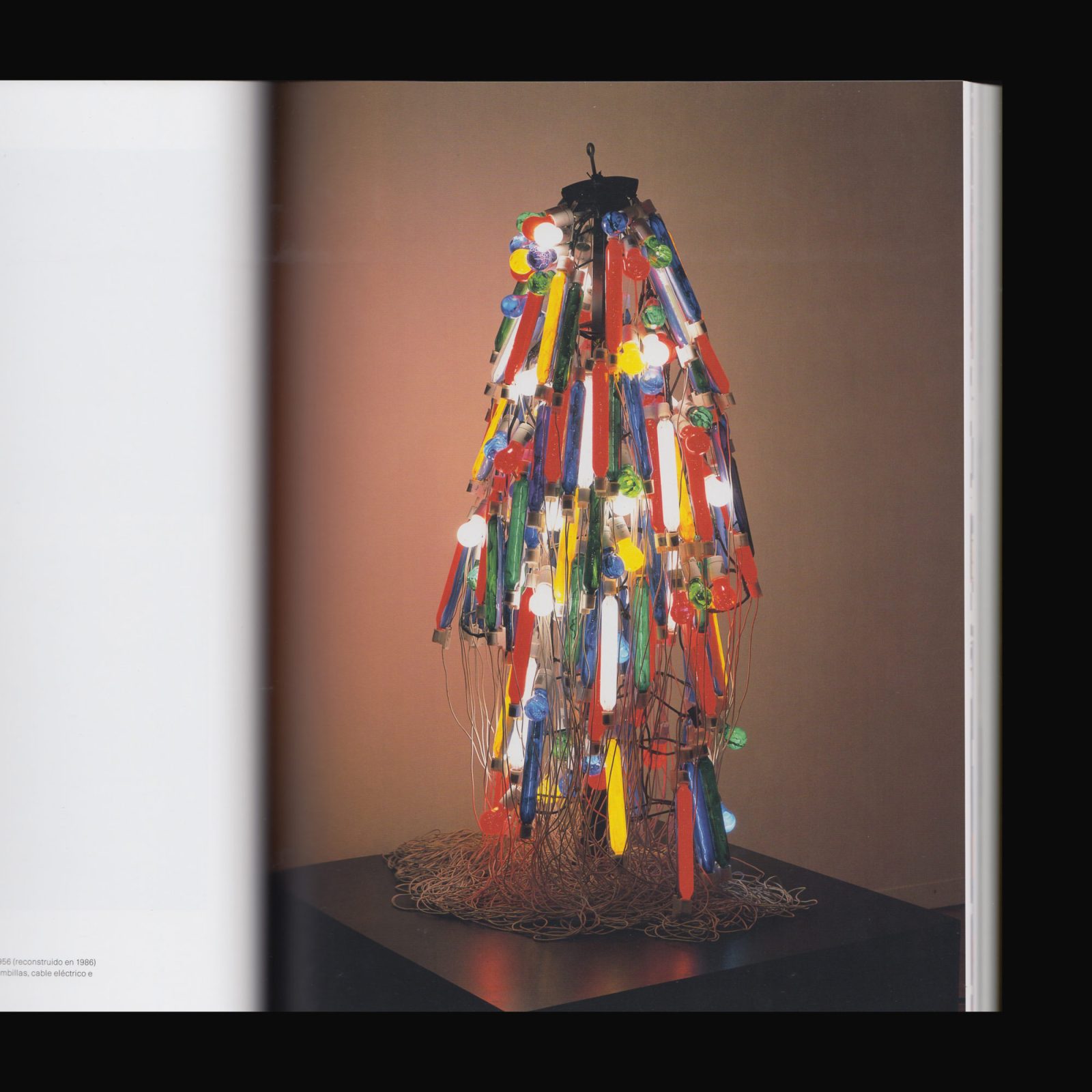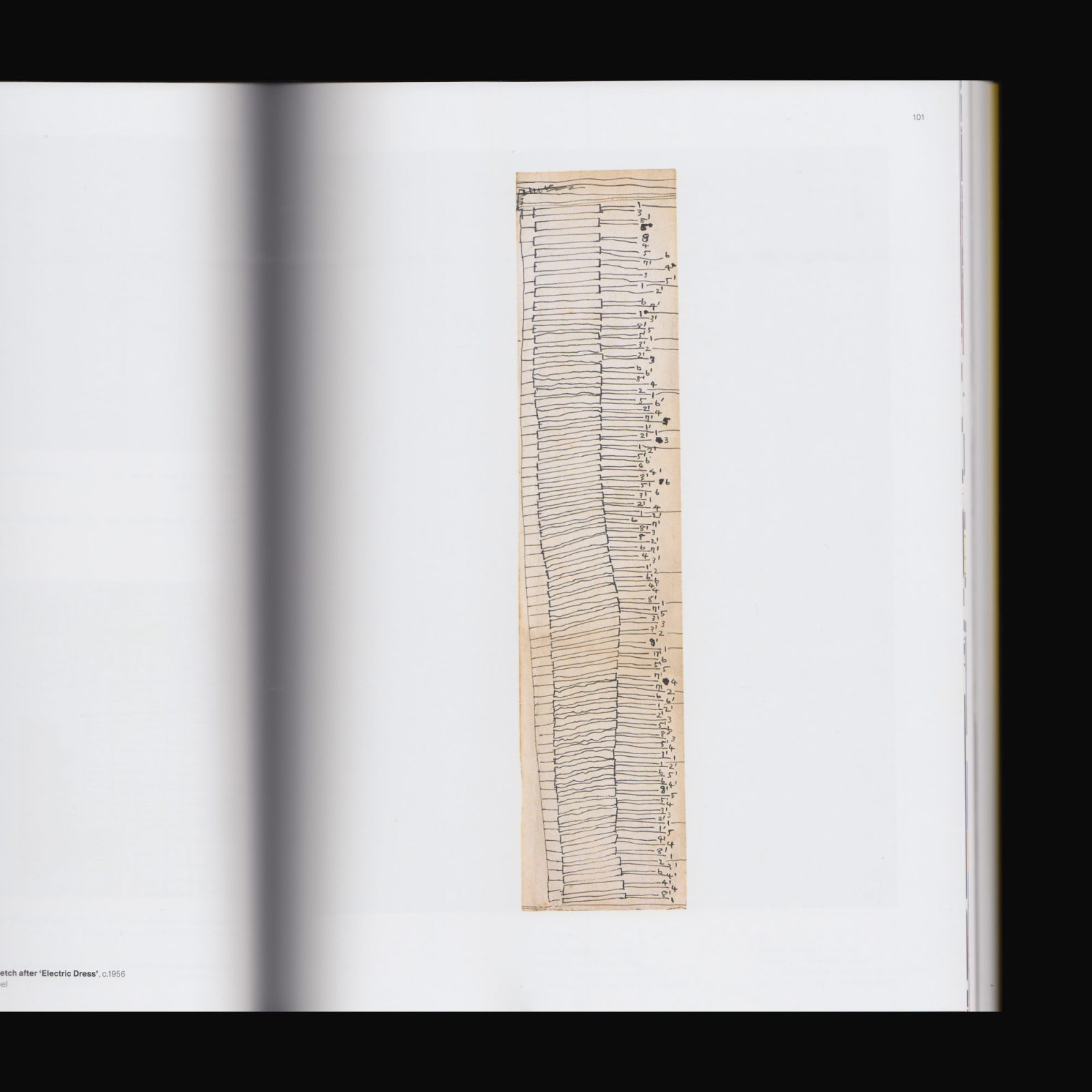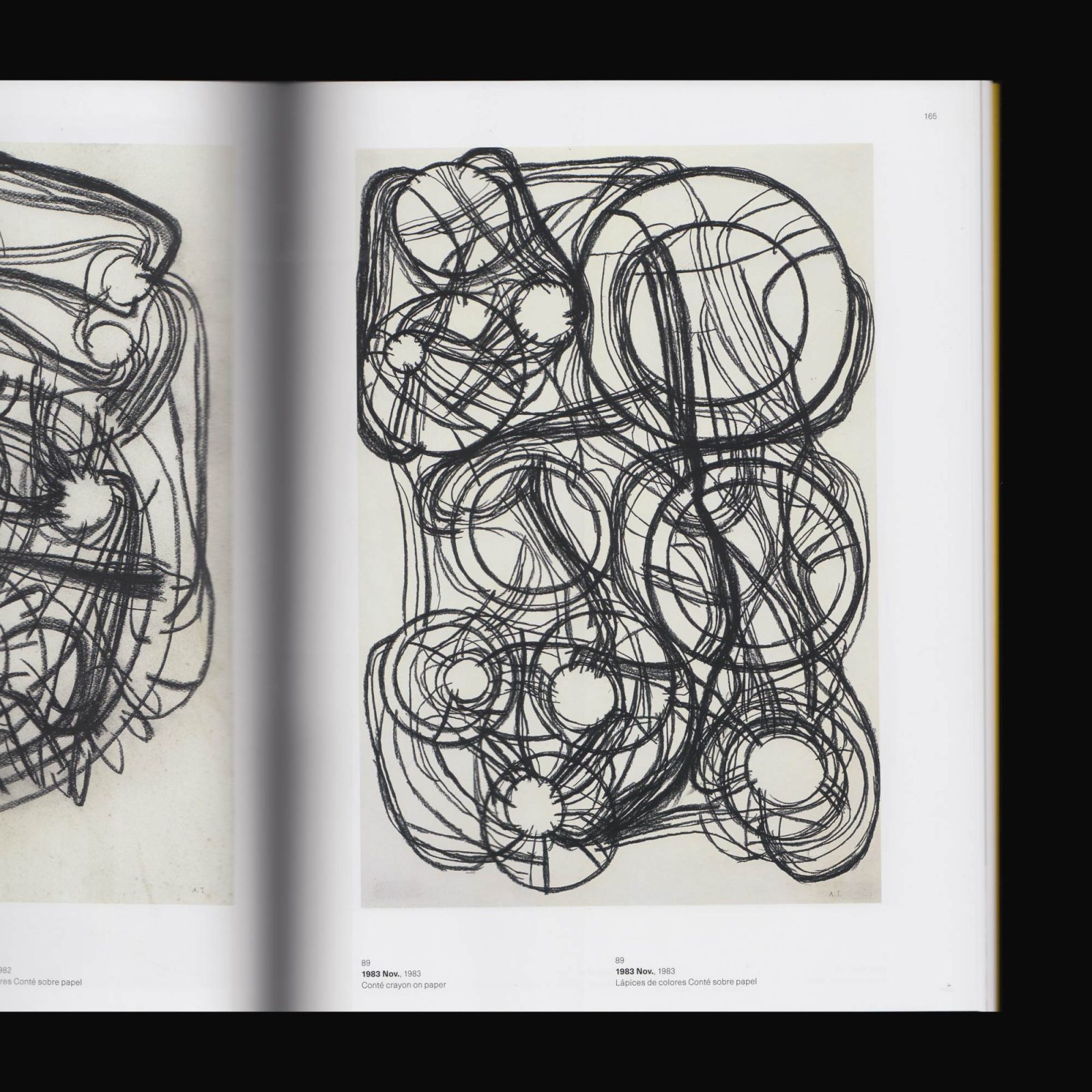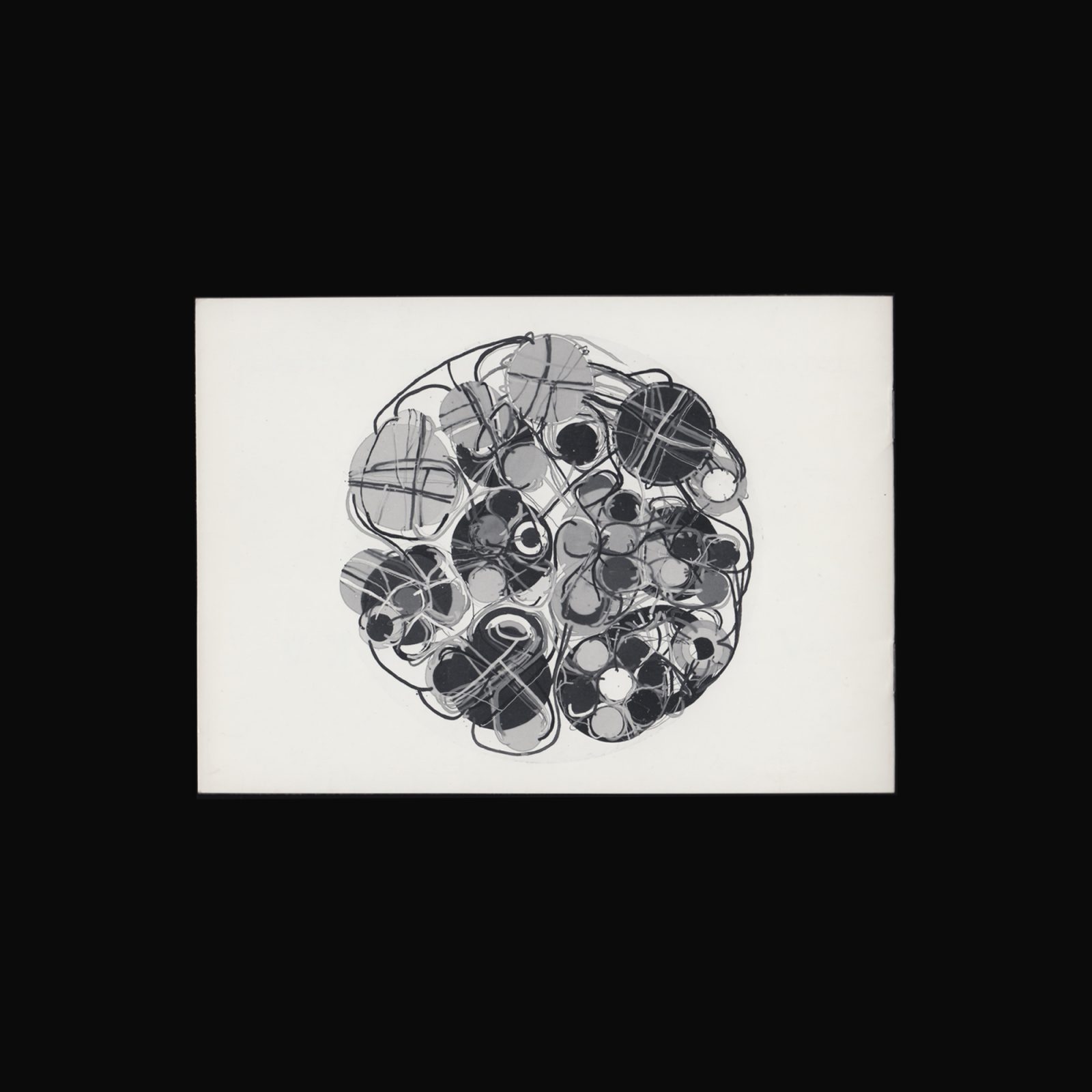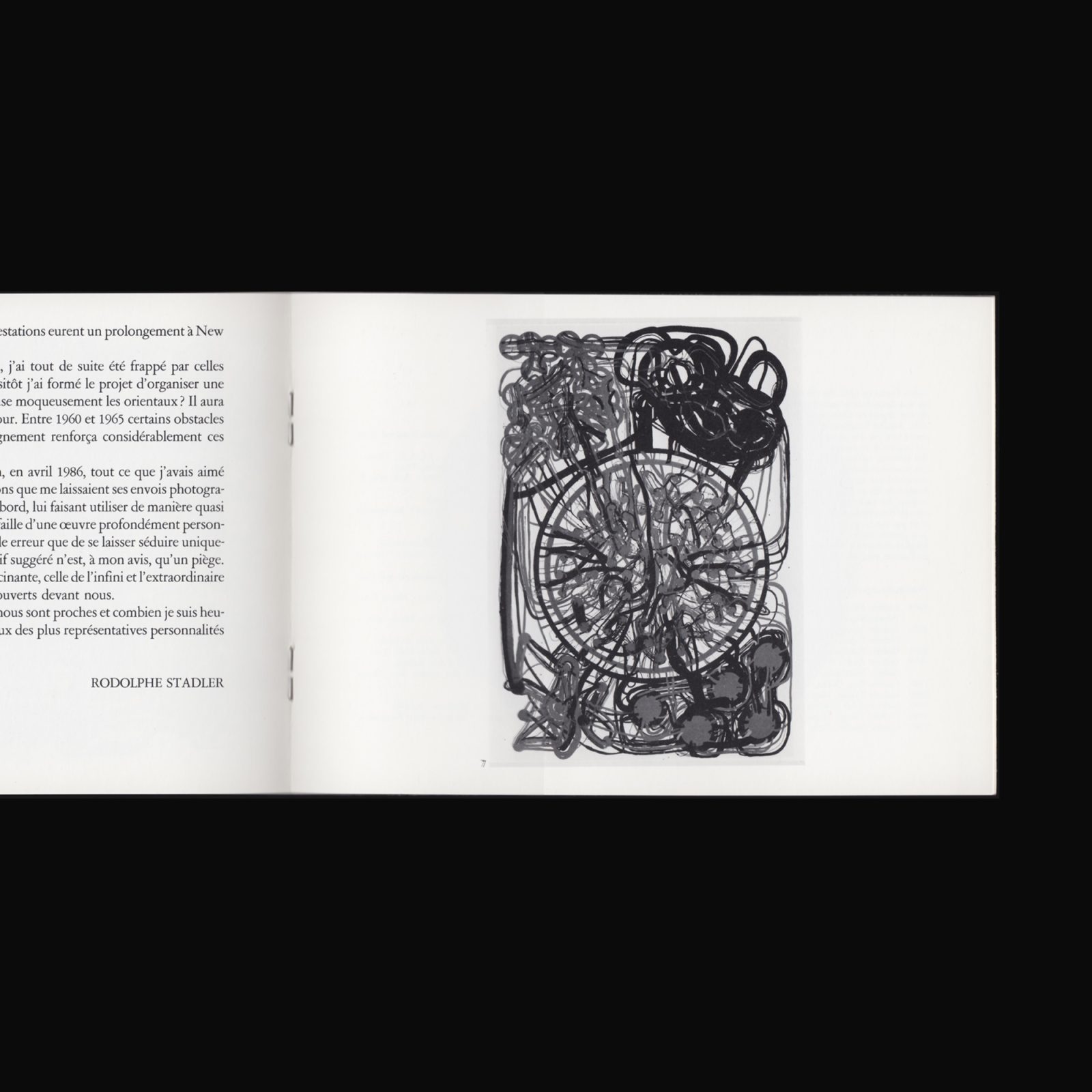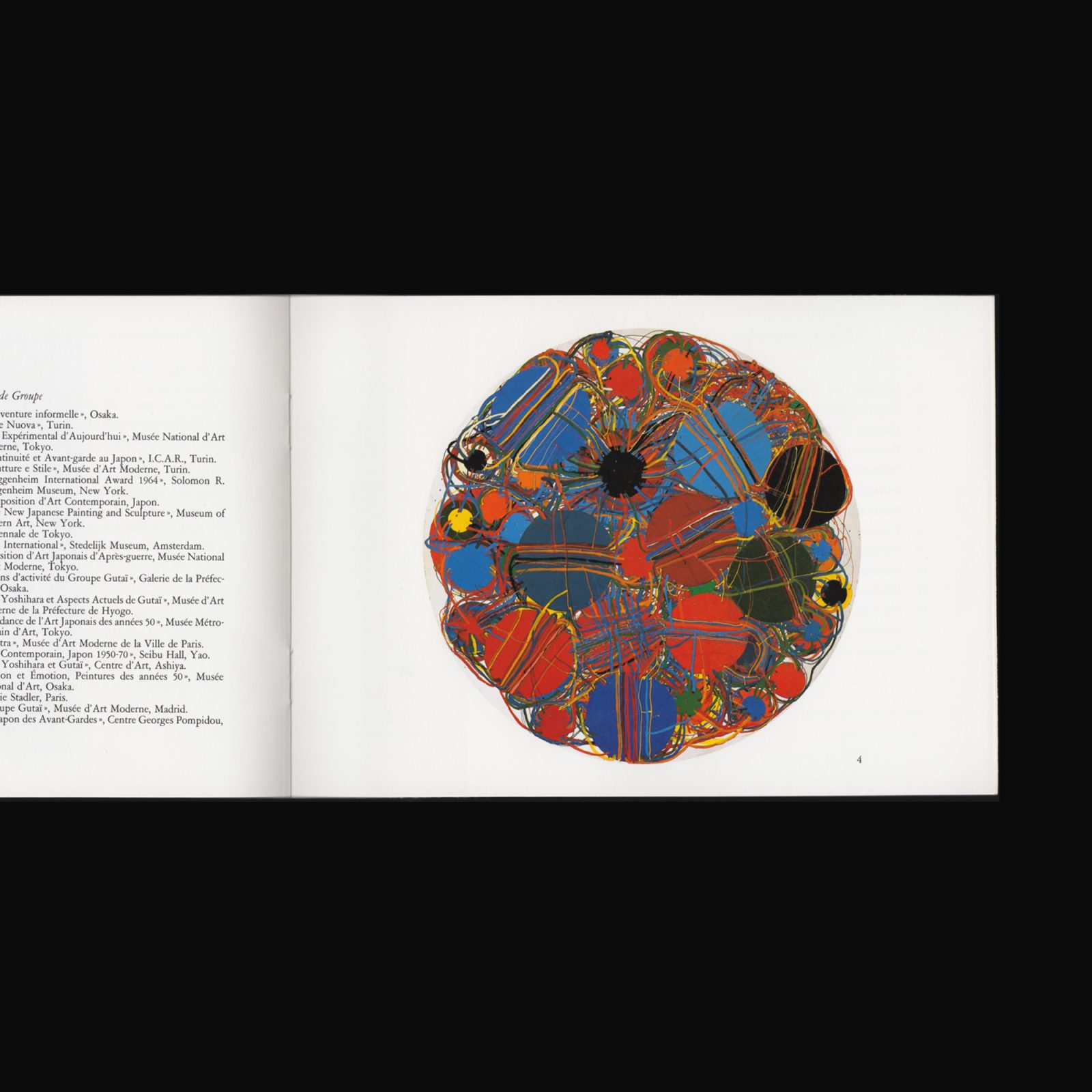1960
Atsuko Tanaka
Produced on the occasion of the exhibition Atsuko Tanaka: 1960 点と線の渦巻き at The Contemporary Art Gallery, Seibu Department Store, Tokyo, 19 April–15 May, 1985.
Atsuko Tanaka was a Japanese avant-garde artist best known for her Neo-Dada Electric Dress (1956), a garment made from hundreds of lightbulbs painted in primary colors. This iconic work, which she wore to exhibitions, functions as a conflation of Japanese traditional clothing with modern urbanization, bringing an unexpected and challenging interpretation to both. “I wanted to shatter stable beauty with my work,” Tanaka once said. A member of the Gutai movement, much of her work used domestic objects like lightbulbs, textiles, doorknobs, and doorbells. With these objects, the artist was able to create work about the body without a body present. She maintained a broad practice that included performance “happenings,” sculpture, and installation, while her later work focusing on two-dimensional painting, with colorful organic abstract shapes connecting circles and lines.
*Please note this publication is secondhand and has some traces of previous ownership.



